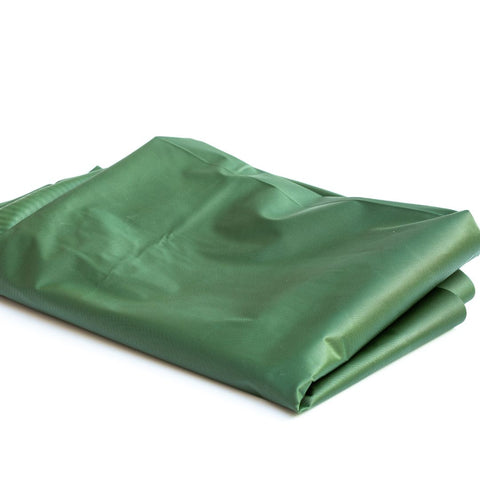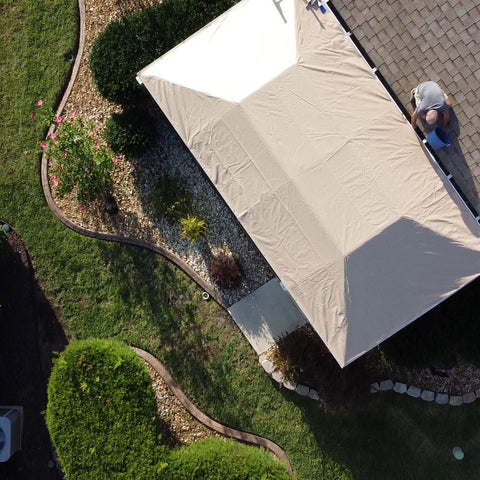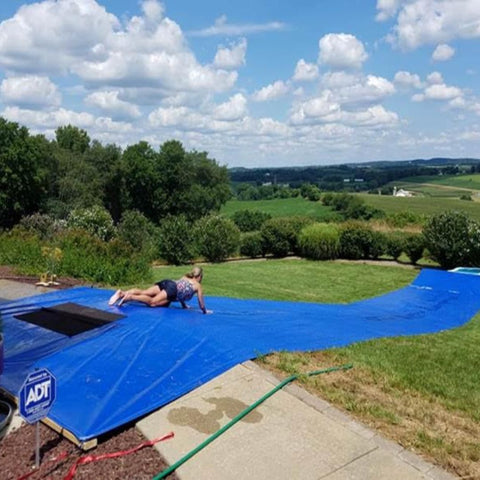Understanding Vinyl Tarps: Types and Materials
Exploring the different types of vinyl tarps and the materials they are made from requires a deep understanding of the various applications and durability requirements they meet. Vinyl tarps are renowned for their strength, versatility, and durability, making them ideal for a wide range of uses, from construction and agriculture to recreational and industrial applications.
Types of Vinyl Tarps

Heavy-Duty Vinyl Tarps: Designed for the most rigorous applications, these tarps are made from high-grade vinyl material that can withstand harsh weather conditions and heavy wear and tear. They are often used in construction sites, truck covers, and outdoor shelters.
Flame Retardant Vinyl Tarps: These are specially designed for environments where fire safety is a priority. The vinyl material is treated with flame retardant chemicals, making them ideal for use in industrial settings, workshops, and areas where welding or open flames are present.
Clear Vinyl Tarps: These tarps are transparent, allowing light to pass through while offering protection against weather and dust. They are perfect for greenhouses, outdoor patios, and enclosures where visibility is important.
Insulated Tarps | Concrete Recurring Blankets: Used primarily in colder climates, these vinyl insulated tarps have an insulated layer to help maintain temperature control. They are commonly used in the transportation of temperature-sensitive goods and as covers for outdoor storage.
Materials Used in Vinyl Tarps

The primary material used in vinyl tarps is PVC (Polyvinyl Chloride). This synthetic plastic polymer is known for its durability, resistance to environmental factors, and versatility.
Laminated Vinyl: This is a lightweight material often used in general-purpose tarps. It is treated with a laminate coating to enhance its water resistance and durability.
Coated Vinyl: Heavier and more durable than laminated vinyl, coated vinyl is used in heavy-duty tarps. The vinyl is coated on both sides, providing additional strength and resistance to abrasion.
Mesh Vinyl: This material is used in tarps that require air circulation. Mesh vinyl tarps are perfect for covering items that need breathability, like plants, or for use in areas where wind resistance is a factor.
Reinforced Vinyl: For extra strength and durability, reinforced vinyl includes a layer of polyester mesh between layers of vinyl. This makes it ideal for very heavy-duty applications where tear resistance is critical.
Durability Factors: What to Look for in a Quality Vinyl Tarp

Discussing aspects like thickness, UV resistance, and tear strength that determine the durability of vinyl tarps.
Thickness and Its Impact on Durability
The thickness of a vinyl tarp refers to the actual thickness of the vinyl material itself, typically measured in mils or millimeters. A mil is one-thousandth of an inch. This measurement is crucial as it often determines the strength, durability, and flexibility of the tarp.
Thicker tarps are generally more durable and resistant to punctures, abrasions, and tearing. They are also better at withstanding harsh weather conditions, heavy-duty use, and long-term exposure to the elements.
Generally, the thicker the vinyl tarp, the more durable it is. This is because thicker material can resist physical damage and environmental stressors better than thinner material.
However, it's important to note that durability also depends on other factors like the quality of the vinyl, UV resistance, and the manufacturing process. A well-made, thinner tarp can sometimes outlast a poorly made thicker one.
Lightweight Tarps (around 6-8 mils): Ideal for short-term, light-duty applications like temporary covers, light rain protection, or as dust covers.
Medium Thickness Tarps (around 10-14 mils): Suitable for medium-duty applications such as equipment covers, moderate weather protection, or for use in camping.
Heavy-Duty Tarps (16 mils and above): These are best for heavy-duty applications like truck covers, industrial covers, construction sites, long-term outdoor storage, or extreme weather conditions.
UV Resistance - Protecting Against the Sun

UV resistance in the context of vinyl tarps refers to the ability of the material to withstand damage or degradation caused by ultraviolet (UV) rays from the sun. This resistance is crucial for several reasons:
Protection Against Sun Damage: UV rays can cause significant damage to materials exposed to the sun for extended periods. For vinyl tarps, UV exposure can lead to fading, weakening, and eventual breakdown of the material. This is particularly important for tarps used outdoors where they are constantly exposed to sunlight.
Longevity and Durability: Tarps with UV resistance are more durable and have a longer lifespan. UV resistance helps the tarp maintain its integrity, strength, and appearance over time, even under harsh sunlight. This is essential for applications where the tarp is expected to last for several years, such as in construction, agriculture, or outdoor storage.
Cost-Effectiveness: While UV-resistant tarps might be more expensive initially, their ability to last longer without needing frequent replacement makes them more cost-effective in the long run. This is especially true for industries or applications where tarps are a critical component.
The technology and materials used to enhance UV resistance in vinyl tarps include:
UV Stabilizers: These are additives mixed into the vinyl material during the manufacturing process. UV stabilizers absorb or block harmful UV radiation, protecting the tarp material from degradation.
Protective Coatings: Some vinyl tarps come with a special coating applied to the surface that provides additional UV protection. This coating acts as a barrier against UV rays, extending the tarp's lifespan.
High-Quality PVC Material: Polyvinyl chloride (PVC), the primary material in vinyl tarps, can be engineered to be more resistant to UV rays. High-quality PVC materials are less prone to degradation from sunlight.
Color Choices: The color of the tarp can also play a role in UV resistance. Darker colors tend to absorb more UV rays, radiate more heat. Lighter colors reflect more sunlight and may offer better UV resistance.
Tear Strength - Assessing Resistance to Damage

Tear strength is a critical measure of a material's resistance to tearing, especially in products like vinyl tarps where durability and longevity are paramount. This attribute is essential for understanding how well a tarp can withstand physical stress and environmental conditions without failing.
Concept of Tear Strength in Vinyl Tarps
Tear strength in vinyl tarps refers to the material's ability to resist tearing when under stress. It's a key indicator of the tarp's durability and reliability, especially in demanding applications like outdoor coverage, truck covers, or construction use. Vinyl, being a synthetic polymer, is prized for its resilience and flexibility, which contribute to its tear resistance.
Measuring Tear Strength
The measurement of tear strength is usually carried out through standardized tests that apply force to a pre-cut sample of the vinyl material until it tears. The most common method is the "grab test," where two sets of clamps grip the material on either side of a pre-cut slit, and force is applied perpendicularly to the slit until the material tears. The force required to initiate and propagate the tear is measured in pounds or Newtons. This value provides a quantitative assessment of the material's tear resistance.
Importance of Tear Strength for Durability
The significance of tear strength lies in its direct correlation with the tarp's overall durability and service life. High tear strength means the tarp can resist damage from physical forces, such as high winds, sharp objects, or heavy loads. This is particularly important in harsh environments where the material is exposed to continuous stress or in applications where the tarp must withstand rough handling.
Enhancing Tear Strength through Manufacturing Techniques
Various manufacturing techniques can enhance the tear strength of vinyl tarps:
Material Composition: The formulation of the vinyl polymer, including the use of plasticizers and UV stabilizers, plays a significant role in enhancing tear resistance.
Weave Density: A higher weave density in the internal scrim (mesh fabric) of the tarp increases its strength and tear resistance.
Lamination and Coating: Applying multiple layers or specialized coatings can reinforce the tarp’s surface, improving its ability to resist tearing.
Heat Sealing and Stitching: The methods used to join and seal the seams of the tarp can also affect its overall tear strength. Heat-sealed seams tend to be stronger and more tear-resistant than stitched ones.
Thickness and Weight: Generally, a thicker and heavier tarp will have higher tear strength due to the increased amount of material present to resist tearing.
By understanding and optimizing these factors, manufacturers can produce vinyl tarps with superior tear strength, ensuring they meet the demands of their intended applications. This results in products that offer better performance, safety, and value to the end-users.
Understanding Tarp Sizes and Shapes

Standard Sizes: Tarps typically come in standard sizes, but it's important to understand that the size advertised is usually the 'cut size' before the hems and seams are added. The 'finished size' might be slightly smaller.
Custom Sizes: For unique requirements, many manufacturers offer custom-sized tarps.
Determining the Right Size
Purpose and Coverage: First, consider what you need the tarp for. The size will depend on whether it's for covering a vehicle, creating a shelter, or protecting construction material.
Measure the Area: Use a measuring tape to get accurate dimensions of the area or item you wish to cover. Add a few extra inches on each side for adequate coverage.
Account for Height and Depth: If covering 3-dimensional objects, remember to measure the height and depth, not just the length and width.
Choosing the Shape
Rectangular Tarps: Most common and versatile. Ideal for covering flat surfaces or objects.
Round Tarps: Better suited for circular objects or areas.
Custom Shapes: Some applications may require unique shapes, like triangular or irregular shapes.
Final Tips
Consider Buying Slightly Larger: It's better to have a tarp that's slightly too large than one that's too small.
Consider Reusability: If you plan to use the tarp for different purposes in the future, a versatile shape and size might be more beneficial.
Selecting the right vinyl tarp involves a careful consideration of various factors, including type, material, durability, UV resistance, tear strength, and size. Whether you need a tarp for heavy-duty industrial use, flame retardant purposes, clear visibility, insulation, or UV protection, understanding the specific characteristics of each type is crucial. The material, be it laminated, coated, mesh, or reinforced vinyl, plays a significant role in the tarp's performance and longevity. Additionally, factors like thickness, UV resistance, and tear strength are vital in determining the tarp's durability and suitability for your specific needs.
When choosing the size and shape, consider the intended use, measure the area accurately, and factor in height and depth for three-dimensional coverage. Always opt for a slightly larger size for flexibility and consider features like grommet placement, waterproofing, and UV protection.
By keeping these considerations in mind, you can choose a vinyl tarp that meets your requirements effectively, ensuring longevity, performance, and cost-effectiveness.





